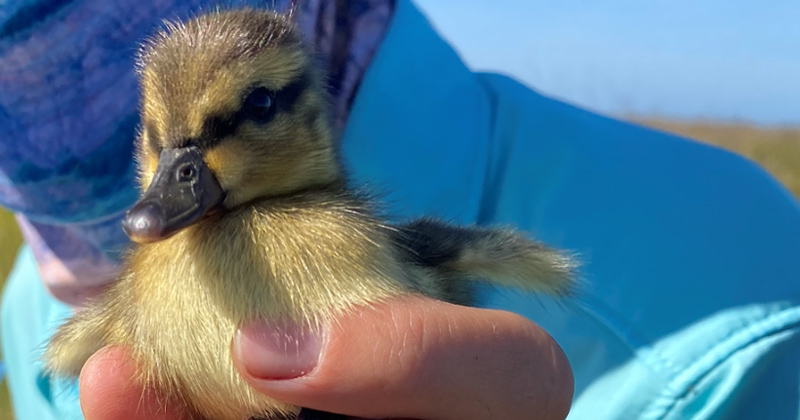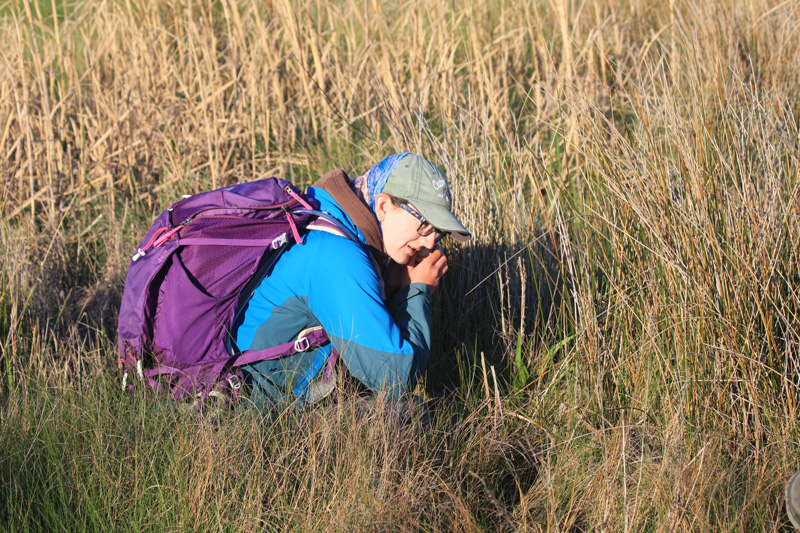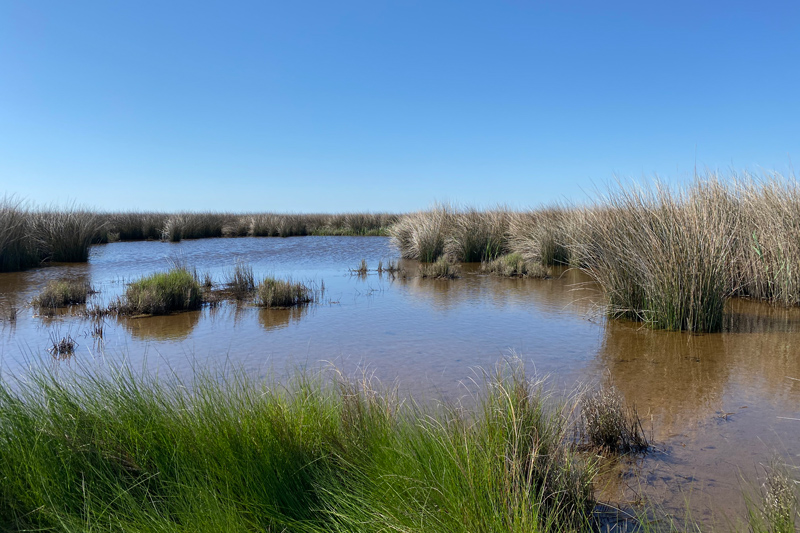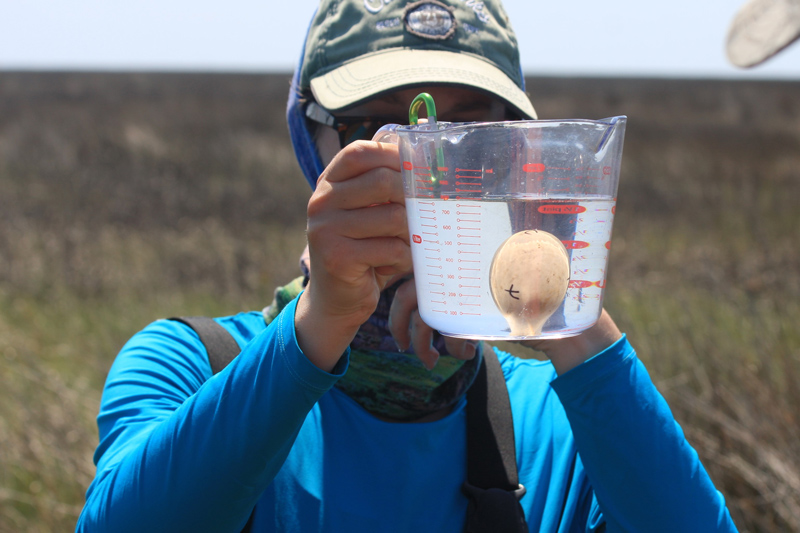


Ducks on the decline
Photos courtesy of Amanda Hoyt October 16, 2020
Wildlife ecology graduate student Amanda Hoyt investigates American black duck survival
The American black duck population in the Atlantic Flyway is in decline. Years ago, these birds were one of the most abundant waterfowl species in the air. Like all waterfowl species, black ducks are an important recreational resource for hunters and their management has led to the restoration of wetlands — a highly functional, irreplaceable ecosystem.
The flyway’s 3,000-mile track reaches from the Arctic tundra of Baffin Island in the north all the way to the Caribbean in the south. American black ducks nest in eastern wetlands, including freshwater and saltmarshes — resting and foraging in protected ponds, marshes and bays during migration.
To understand the decline, University of Delaware researcher Amanda Hoyt is investigating the factors affecting breeding birds by pinpointing issues at a regional level.
“Thanks to previous research at UD, we already know what affects nest success in coastal North Carolina, but we don't know how many ducklings actually survive after they hatch,” said Hoyt, the College of Agriculture and Natural Resources graduate student.

Hoyt went to North Carolina to collect data, where marshes extend like arms into the Pamlico Sound and the Outer Banks shield the area from the tides. She tailed the black ducks to their nests in the thick summer grasses. She then forged her way slightly further inland where duck broods travel after they leave the nest and the marsh is dominated by black needle rush interspersed with shallow pools and mudflats.
Her research will help biologists make management decisions, such as starting habitat restoration projects or removing predators, which may increase duckling production in the area.
Hoyt recently completed her first field season. She used small GPS and very high frequency (VHF) transmitters to determine the movement patterns and survival of hens and their ducklings after they left the nest.

Starting in the spring of 2020, she began her search for black duck nests in salt marsh vegetation. As hens fly off their nests, Hoyt candled and floated the eggs — methods used to estimate how long an egg has been incubating — to estimate their birthdays. Next year, Hoyt will collect additional transmitter data from hens and their broods to investigate what habitat types black duck broods are using. Armed with this new data, she can quantify the selection of brood-rearing areas and which variables affect their survival as they age. While Hoyt can’t say for sure yet what affects survival, she has an educated idea based on her summer observations.
“Brood age is a factor; younger ducklings may have lower survival than older ones possibly because they are more vulnerable to predators and exhaustion,” said Hoyt, who is pursuing her master’s degree in wildlife ecology. “The distance they travel in their initial move away from the nest could be a factor. Especially if they hatch on an island and make a long, over-water movement into the marsh, they may be more prone to exhaustion and predation than broods that stay closer to the nest.”

Hoyt always knew that she wanted to help animals. During her undergraduate coursework, she saw the critical need for conservation and proper management of wildlife. When she graduated, her professional career began with multiple field jobs working hands-on in salt marshes and with the birds that rely on them.
“I knew that I wanted to dedicate my career to researching these habitats and species,” Hoyt said. “They are extremely valuable to ecosystem functions and happen to be very vulnerable.”
Before her time at UD, Hoyt was a waterfowl technician for the state of Connecticut.
“I loved working in the salt marsh and banding black ducks. So, as a graduate student, I am very happy to be studying black ducks in a coastal area,” said Hoyt. “Their populations are declining, and we know so little about broods in this region.”
Hoyt works closely with Chris Williams, professor of wildlife ecology and UD’s Waterfowl and Upland Gamebird Program, which ensures the long-term survival of waterfowl, upland game birds and their habitats in the heart of the Atlantic Flyway.
“Amanda came to UD with years of wildlife and waterfowl experience as well as working with different universities, state and federal agencies,” Williams said. “She’s been an outstanding ambassador for the University of Delaware while we collaborate on research with the North Carolina Wildlife Resources Commission. Dedicated wildlife professionals like her are critical to helping with the future of conservation.”
After she completes her graduate work, Hoyt plans to continue studying American black ducks as a biologist for a state or federal agency.
Contact Us
Have a UDaily story idea?
Contact us at ocm@udel.edu
Members of the press
Contact us at 302-831-NEWS or visit the Media Relations website

